A Study on Exterior Design Alternatives for Temporary Residential Facilities Using Generative Artificial Intelligence
Abstract
1. Introduction
1.1. Background and Purpose of the Study
1.2. Scope and Methodology
2. Literature Review
2.1. Trends in the Exterior Design of Temporary Residential Facilities
2.2. Trends in Temporary Housing Design from the Perspective of Sustainability and Resilience
2.3. Trends in GenAI Applications in Architectural Design
2.4. Trends in Applications of GenAI and T2I Technologies in Architectural Façade Design
2.5. Summary
3. Prompt Items and Scenario Development for Generating Exterior Design Alternatives for Temporary Residential Facilities
3.1. Analysis of Environmental Factors in Domestic and International Temporary Housing Cases
3.2. Derivation of Prompt Items for Generating Temporary Housing Exterior Design Alternatives
3.3. Development of Hypothetical Scenarios for Generating Temporary Housing Exterior Design Alternatives
4. Deriving Temporary Housing Exterior Design Alternatives Using T2I Technology
4.1. Workflow Development for Generating Temporary Housing Exterior Designs with T2I Technology
4.2. Generation of Temporary Housing Exterior Design Alternatives
5. Discussion
5.1. Survey-Based Evaluation of Generated Design Alternatives
5.2. Analysis of Durability and Service Life in AI-Generated Temporary Housing
6. Conclusions
Author Contributions
Funding
Institutional Review Board Statement
Informed Consent Statement
Data Availability Statement
Acknowledgments
Conflicts of Interest
Abbreviations
| BIM | Building information modeling |
| CRED | Centre for Research on the Epidemiology of Disasters |
| DfD | Design for disassembly |
| GAN | Generative adversarial network |
| GenAI | Generative artificial intelligence |
| ITDT | Integrated transdisciplinary tools |
| ISM | Interpretive structural modeling |
| LLM | Large language model |
| LEED | Leadership in Energy and Environmental Design |
| STEP | Sheltering and Temporary Essential Power |
| THU | Temporary housing unit |
| TRIZ | teoriya resheniya izobretatelskikh zadach |
| T2I | Text-to-image |
References
- Song, Y.H.; Wang, W.C.; Lim, S.H. A study of temporary housing design with unit modular method. J. Archit. Inst. Korea Plan. Des. 2013, 29, 155–162. [Google Scholar]
- Perrucci, D.V.; Baroud, H. A review of temporary housing management modeling: Trends in design strategies, optimization models, and decision-making methods. Sustainability 2020, 12, 10388. [Google Scholar] [CrossRef]
- Centre for Research on the Epidemiology of Disasters (CRED). 2023 Disasters in Numbers: A Significant Year of Disaster Impact; Université Catholique de Louvain: Bruxelles, Belgique, 2024; Available online: https://files.emdat.be/reports/2023_EMDAT_report.pdf (accessed on 5 April 2025).
- United Nations Office for Disaster Risk Reduction. The Human Cost of Disasters: An Overview of the Last 20 Years (2000–2019). 2020. Available online: https://www.undrr.org/publication/human-cost-disasters-overview-last-20-years-2000-2019 (accessed on 5 April 2025).
- Federal Emergency Management Agency (FEMA). Possible Sheltering and Housing Assistance for Disaster Survivors; FEMA: Washington, DC, USA, 2025. Available online: https://www.fema.gov/assistance/individual/sheltering-housing-options (accessed on 25 September 2025).
- Federal Emergency Management Agency (FEMA). Direct Housing Guide—Operational Draft, February 2020; FEMA: Washington, DC, USA, 2020. Available online: https://www.fema.gov/sites/default/files/2020-07/Direct_Housing_Guide_Feb2020.pdf (accessed on 25 September 2025).
- United Nations High Commissioner for Refugees (UNHCR). Emergency Shelter Solutions and Standards; UNHCR: Geneva, Switzerland, 2025; Available online: https://emergency.unhcr.org/emergency-assistance/shelter-camp-and-settlement/shelter-and-housing/emergency-shelter-solutions-and-standards (accessed on 25 September 2025).
- Natural Hazards Center. Reimagining Resilience: Leveraging Generative AI for Long-Term Disaster Recovery. 2025 Natural Hazards Workshop—Researchers Meeting. 2025. Available online: https://hazards.colorado.edu/workshop/2025/researchers-meeting/reimagining-resilience-leveraging-generative-ai-for-long-term-disaster-recovery (accessed on 26 September 2025).
- Li, P.; Li, B.; Li, Z. Sketch-to-architecture: Generative AI-aided architectural design. arXiv 2024, arXiv:2403.20186. Available online: https://arxiv.org/abs/2403.20186 (accessed on 25 September 2025).
- Wang, X.; He, Z.; Peng, X. Artificial-Intelligence-Generated Content with Diffusion Models: A Literature Review. Mathematics 2024, 12, 977. [Google Scholar] [CrossRef]
- Zhang, C.; Zhang, C.; Zhang, M.; Kweon, I.S.; Kim, J. Text-to-image Diffusion Models in Generative AI: A Survey. arXiv 2023, arXiv:2303.07909v3. [Google Scholar] [CrossRef]
- Cousins, S. Architects Tap in to Gen AI for Design and Business Efficiencies. RIBA J. 2024. Available online: https://www.ribaj.com/intelligence/generative-ai-business-design-efficiency (accessed on 26 September 2025).
- Li, C.; Zhang, T.; Du, X.; Zhang, Y.; Xie, H. Generative AI Models for Different Steps in Architectural Design: A Literature Review. arXiv 2024, arXiv:2404.01335v2. Available online: https://arxiv.org/abs/2404.01335 (accessed on 25 September 2025). [CrossRef]
- Palmiotta, A.; D’Amato, M.; Gigliotti, R. Seismic Behaviour of Steel Modular Buildings: Numerical Analysis and Comparisons between Different Design Solutions. Procedia Struct. Integr. 2023, 44, 1156–1163. [Google Scholar] [CrossRef]
- Lacey, A.W.; Chen, W.; Hao, H.; Bi, K. Structural Response of Modular Buildings—An Overview. J. Build. Eng. 2018, 16, 45–56. [Google Scholar] [CrossRef]
- Yu, H.; Bai, G. Research on modularization and sustainable design of temporary housing. Art Des. Rev. 2018, 6, 125–132. [Google Scholar] [CrossRef]
- Grakhov, V.P.; Tolkachev, Y.A. Prospects for the use of modular construction in the organization of temporary accommodation. Bull. Belgorod State Technol. Univ. Named After. V. G. Shukhov 2022, 7, 49–63. [Google Scholar] [CrossRef]
- Kang, H.S.; Heo, S.M.; An, S.M.; Lee, Y.H. A study on the planning of temporary housing facilities applying the concept of folding. J. Archit. Inst. Korea 2022, 38, 53–60. [Google Scholar]
- Kang, H.S.; Kim, J.H. A study on the planning of temporary housing facilities in dome structure—Focusing on assemblability, mobility, and insulation. J. Archit. Inst. Korea 2024, 40, 121–129. [Google Scholar]
- Moran, D.; Ertas, A.; Gulbulak, U. A unique transdisciplinary engineering-based integrated approach for the design of temporary refugee housing using Kano, HOQ/QFD, TRIZ, AD, ISM and DSM tools. Designs 2021, 5, 31. [Google Scholar] [CrossRef]
- Guzhova, O.A.; Khairullin, M.F. Using modular designs for the construction of temporary housing. Urban Constr. Archit. 2022, 12, 4–10. [Google Scholar] [CrossRef]
- Montalbano, G.; Santi, G. Sustainability of temporary housing in post-disaster scenarios: A requirement-based design strategy. Buildings 2023, 13, 2952. [Google Scholar] [CrossRef]
- Ruíz, M.A.; Mack-Vergara, Y.L. Resilient and sustainable housing models against climate change: A review. Sustainability 2023, 15, 13544. [Google Scholar] [CrossRef]
- Tirella, V.; Fabbricatore, C.; Carpino, C.; Arcuri, N.; Barreca, F. Configuration optimization for sustainable temporary houses employing BIM procedure. Buildings 2023, 13, 2728. [Google Scholar] [CrossRef]
- Friedman, A. Housing design for circular economy and sustainability. Sustainability 2025, 17, 2921. [Google Scholar] [CrossRef]
- Lee, D.H.; Ko, S.H. Experiment and evaluation of architectural image generation through artificial intelligence-based text image generation tool. KIEAE J. 2023, 23, 13–22. [Google Scholar] [CrossRef]
- Tan, L.; Luhrs, M. Using generative AI Midjourney to enhance divergent and convergent thinking in an architect’s creative design process. Des. J. 2024, 27, 677–699. [Google Scholar] [CrossRef]
- Jo, H.; Lee, J.K.; Lee, Y.C.; Choo, S. Generative artificial intelligence and building design: Early photorealistic render visualization of façades using local identity-trained models. J. Comput. Des. Eng. 2024, 11, 85–105. [Google Scholar] [CrossRef]
- Lee, J.K.; Yoo, Y.; Cha, S.H. Generative early architectural visualizations: Incorporating architect’s style-trained models. J. Comput. Des. Eng. 2024, 11, 40–59. [Google Scholar] [CrossRef]
- Li, Y.; Chen, H.; Yu, P.; Yang, L. A review of artificial intelligence in enhancing architectural design efficiency. App. Sci. 2025, 15, 1476. [Google Scholar] [CrossRef]
- Yang, F.; Qian, W. Generative architectural design from textual prompts: Enhancing high-rise building concepts for assisting architects. App. Sci. 2025, 15, 3000. [Google Scholar] [CrossRef]
- Ali, A.K.; Lee, O.J. Facade style mixing using artificial intelligence for urban infill. Architecture 2023, 3, 258–269. [Google Scholar] [CrossRef]
- Lin, Y.; Song, M. Exploring the potential of generative adversarial networks in enhancing urban renewal efficiency. Sustainability 2024, 16, 5768. [Google Scholar] [CrossRef]
- Wan, D.; Zhao, R.; Zhang, S.; Liu, H.; Guo, L.; Li, P.; Ding, L. A deep learning-based approach to generating comprehensive building façades for low-rise housing. Sustainability 2023, 15, 1816. [Google Scholar] [CrossRef]
- Moon, J.-I.; Song, Y.-H.; Wang, W.-C.; Lim, S.-H. A study on field examinations and interviews for Yeonpyeongdo Temporary Housing. J. Korean Hous. Assoc. 2012, 23, 21–28. [Google Scholar] [CrossRef]
- Wang, W.-C.; Song, Y.-H.; Lim, S.-H. A research study on comparative analysis of architectural planning improvement on temporary housing of Korea and Japan. J. Archit. Inst. Korea Plan. Des. 2012, 28, 29–37. [Google Scholar] [CrossRef]
- Moon, J.-I.; Lee, S.-H. A case study on the typology of temporary housing according to disasters. J. Archit. Inst. Korea Plan. Des. 2006, 22, 141–148. [Google Scholar]
- Kim, S.; Nam, K. A study on spatial characteristics of post-disaster interim housing. Korean Inst. Inter. Des. J. 2015, 24, 108–116. [Google Scholar]
- Stocker, M.; Schneider, G.; Zeilinger, J.; Rose, G.; Damyanovic, D.; Huber-Humer, M. Urban temporary housing environments—From a systematic comparison towards an integrated typology. J. Hous. Built Environ. 2021, 36, 1457–1482. [Google Scholar] [CrossRef]
- Lizhen0211. Stable Diffusion v1.5; GitHub: San Francisco, CA, USA. Available online: https://github.com/lizhen0211/stable-diffusion-v1-5 (accessed on 5 April 2025).
- Sepanta, F. Artificial Intelligence Can Support Architects but Lacks Empathy and Ethics. Carleton Newsroom. 2023. Available online: https://newsroom.carleton.ca/story/ai-empathy-ethics-architect-support/ (accessed on 26 September 2025).
- Bayramli, Z.; Suleymanzade, A.; An, N.M.; Ahmad, H.; Kim, E.; Park, J.; Thorne, J.; Oh, A. Diffusion Models Through a Global Lens: Are They Culturally Inclusive? arXiv 2025, arXiv:2502.08914. Available online: https://arxiv.org/abs/2502.08914 (accessed on 26 September 2025). [CrossRef]
- Ananthram, A.; Stengel-Eskin, E.; Vondrick, C.; Bansal, M.; McKeown, K. See It from My Perspective: Diagnosing the Western Cultural Bias of Large Vision-Language Models in Image Understanding. arXiv 2024, arXiv:2406.11665. Available online: https://arxiv.org/abs/2406.11665 (accessed on 26 September 2025). [CrossRef]

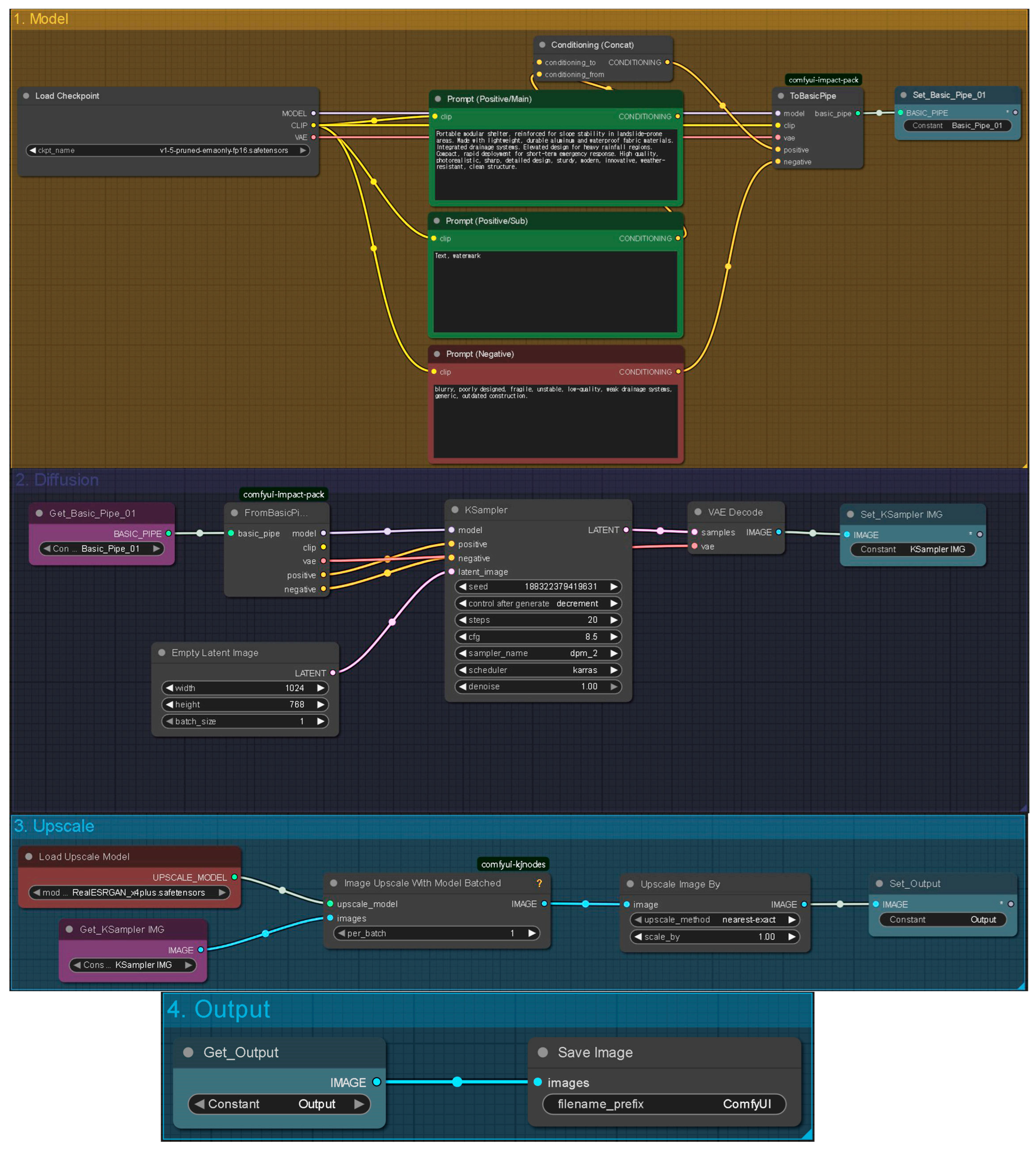
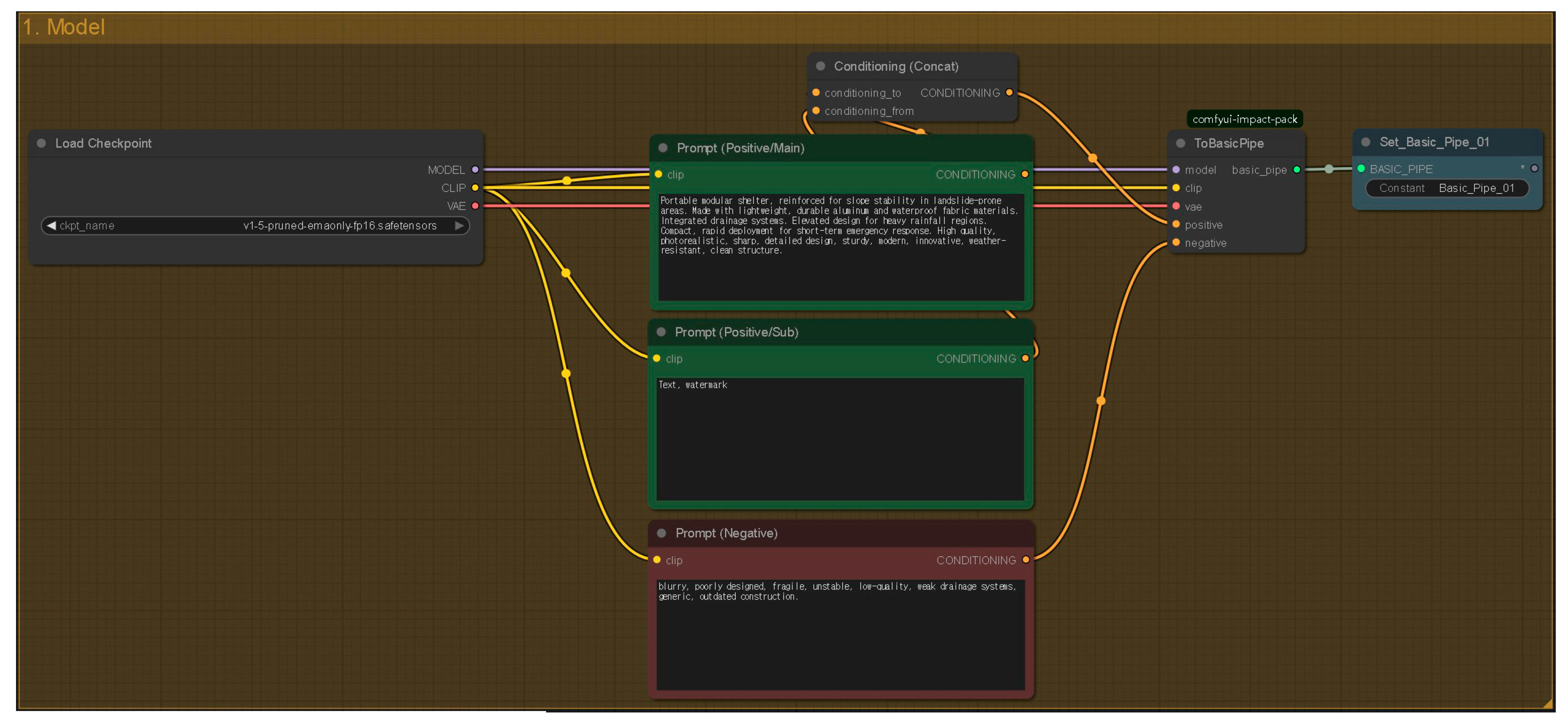



| No. | Factor | Description | A | B | C | D | E |
|---|---|---|---|---|---|---|---|
| 1 | Economic Feasibility | GDP level of the disaster-affected area and availability of economic support | ◎ | 〇 | △ | 〇 | ◎ |
| 2 | Location | Location of temporary housing (urban, rural, etc.) and natural environmental conditions | ◎ | 〇 | △ | ◎ | ◎ |
| 3 | Housing Duration | Duration of housing needs: short-term, mid-term, or long-term | 〇 | ◎ | △ | 〇 | ◎ |
| 4 | Structural Stability | Durability, prefabricated structure type, and resistance to environmental factors | △ | 〇 | ◎ | 〇 | ◎ |
| 5 | Type | Housing types such as standalone, collective, prefabricated, or mobile units | 〇 | ◎ | 〇 | △ | ◎ |
| 6 | Materials | Use of local materials (wood, metal, plastic, etc.) and recyclability | 〇 | ◎ | 〇 | 〇 | 〇 |
| 7 | Environmental Suitability | Climatic conditions (temperature, rainfall, etc.) and harmony with the local environment | △ | ◎ | 〇 | 〇 | 〇 |
| 8 | Hygiene and Health | Availability of sanitary facilities (toilets, water supply, etc.) and disease prevention | ◎ | 〇 | ◎ | 〇 | △ |
| 9 | Social Sustainability | Interaction with local residents and potential for long-term use | 〇 | △ | 〇 | ◎ | ◎ |
| 10 | Cultural Considerations | Incorporation of local cultural and religious characteristics in design | △ | 〇 | △ | ◎ | 〇 |
| Label | Prompt Item |
|---|---|
| A | Type of Disaster |
| B | Location and Climate |
| C | Duration of Residence |
| D | Materials and Structure |
| E | Housing Design |
| No. | Disaster Situation | Hypothetical Scenario | Prompt | |
|---|---|---|---|---|
| 1 | Flood | A | Severe flood conditions, rapid water level rise | Modular container-based temporary shelter, made from waterproof and insulated materials, elevated on steel stilts, designed for flood-prone areas with rapid water level rise, tropical climate, high rainfall, strong steel frame, sustainable design, minimalistic interior, durable for medium-term residence, rapid assembly, disaster-relief housing High quality, photorealistic, detailed design, sturdy, weather-resistant, clean lines, modern aesthetic, innovative structural elements Blurry, poorly constructed, low quality, unstable, weak materials, traditional tents, outdated design, fragile structure |
| B | Low-lying coastal area, tropical climate, high rainfall | |||
| C | Medium-term | |||
| D | Recycled steel and plastic materials for durability and waterproofing | |||
| E | Elevated modular container homes designed for flood-prone areas | |||
| 2 | Storm | A | Strong winds and cyclone-prone conditions | Aerodynamic, wind-resistant modular shelter, designed for cyclone-prone areas, reinforced steel frames, lightweight aluminum panels, waterproof construction, coastal climate with high humidity and frequent storms, designed for short-term residence, easy deployment, sustainable materials, compact design High quality, photorealistic, sharp details, robust structure, clean lines, modern design, windproof, storm-resistant Blurry, poorly designed, low quality, unstable, weak joints, fragile materials, poorly assembled, generic structure |
| B | Coastal region with high humidity and frequent storms | |||
| C | Short-term | |||
| D | Reinforced lightweight materials to resist wind pressure | |||
| E | Aerodynamic dome-shaped housing for storm resilience | |||
| 3 | Earthquake | A | High-magnitude earthquake with significant structural damage | Single-story modular housing, earthquake-resistant design with shock-absorbing joints, reinforced concrete and steel materials, designed for high-magnitude earthquake-prone regions, urban area, medium-term housing, flexible connectors for seismic activity, durable construction, sustainable and secure design High quality, photorealistic, sharp, detailed design, strong structural integrity, modern appearance, innovative engineering Blurry, poorly constructed, fragile, unstable, low-quality materials, weak connectors, generic and outdated designs |
| B | Seismically active urban area with high population density | |||
| C | Medium-term | |||
| D | Earthquake-resistant materials such as reinforced concrete | |||
| E | Modular units with flexible joints to withstand seismic activity | |||
| 4 | Drought | A | Extreme heat and water scarcity in arid regions | Dome-shaped modular shelter, highly insulated, designed for extreme heat and arid desert climates, made with bamboo and mud-based materials, equipped with rainwater harvesting systems, natural ventilation for sustainable cooling, long-term residence, eco-friendly design, solar-powered for energy efficiency High quality, photorealistic, sharp details, eco-friendly, innovative, sustainable, clean design, vibrant and modern Blurry, poorly constructed, unstable, low-quality, damaged materials, weak insulation, generic structure, ineffective cooling |
| B | Desertified climate with prolonged drought conditions | |||
| C | Long-term | |||
| D | Bamboo and mud-based eco-friendly materials | |||
| E | Insulated dome-shaped housing with integrated cooling systems | |||
| 5 | Landslide | A | Heavy rainfall causing unstable slopes and mudslides | Portable modular shelter, reinforced for slope stability in landslide-prone areas, made with lightweight and durable aluminum, waterproof fabric materials, integrated drainage systems, elevated design for heavy rainfall regions, compact and rapid deployment for short-term emergency response High quality, photorealistic, sharp, detailed design, sturdy and modern, innovative, weather-resistant, clean structure Blurry, poorly designed, fragile, unstable, low-quality, weak drainage systems, generic and outdated construction |
| B | Mountainous region with high precipitation | |||
| C | Short-term | |||
| D | Lightweight aluminum and waterproof fabric materials | |||
| E | Elevated housing units on reinforced beams to prevent landslide damage | |||
| Scenario | Alternative 1 | Alternative 2 | Alternative 3 |
|---|---|---|---|
| Flood | 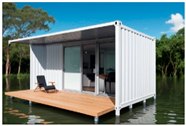 | 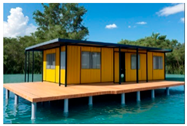 | 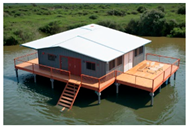 |
| Storm |  | 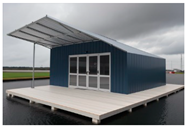 | 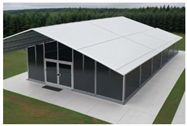 |
| Earthquake |  |  |  |
| Drought |  |  |  |
| Landslide |  | 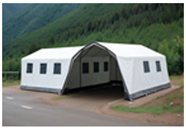 | 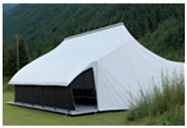 |
| Criteria | Number of Images (N) | Minimum (Min) | Maximum (Max) | Mean (M) | Standard Deviation (SD) |
|---|---|---|---|---|---|
| Prompt Fidelity | 15 | 4.2 | 6.8 | 5.80 | 0.95 |
| Architectural Plausibility | 15 | 2.5 | 5.9 | 4.50 | 1.32 |
| Practical Feasibility | 15 | 1.8 | 5.2 | 3.90 | 1.48 |
| Disaster Scenario | Number of Images (n) | Mean (M) | Standard Deviation (SD) | F Value | p-Value (p) |
|---|---|---|---|---|---|
| Flood | 3 | 4.85 | 1.15 | 4.21 | 0.42 |
| Storm | 3 | 4.10 | 1.28 | ||
| Earthquake | 3 | 3.25 | 1.42 | ||
| Drought | 3 | 4.30 | 1.33 | ||
| Landslide | 3 | 2.98 | 1.51 | ||
| Total | 15 | 3.90 | 1.48 |
Disclaimer/Publisher’s Note: The statements, opinions and data contained in all publications are solely those of the individual author(s) and contributor(s) and not of MDPI and/or the editor(s). MDPI and/or the editor(s) disclaim responsibility for any injury to people or property resulting from any ideas, methods, instructions or products referred to in the content. |
© 2025 by the authors. Licensee MDPI, Basel, Switzerland. This article is an open access article distributed under the terms and conditions of the Creative Commons Attribution (CC BY) license (https://creativecommons.org/licenses/by/4.0/).
Share and Cite
Lee, H.; Lee, J. A Study on Exterior Design Alternatives for Temporary Residential Facilities Using Generative Artificial Intelligence. Appl. Sci. 2025, 15, 10583. https://doi.org/10.3390/app151910583
Lee H, Lee J. A Study on Exterior Design Alternatives for Temporary Residential Facilities Using Generative Artificial Intelligence. Applied Sciences. 2025; 15(19):10583. https://doi.org/10.3390/app151910583
Chicago/Turabian StyleLee, Hyemin, and Jongho Lee. 2025. "A Study on Exterior Design Alternatives for Temporary Residential Facilities Using Generative Artificial Intelligence" Applied Sciences 15, no. 19: 10583. https://doi.org/10.3390/app151910583
APA StyleLee, H., & Lee, J. (2025). A Study on Exterior Design Alternatives for Temporary Residential Facilities Using Generative Artificial Intelligence. Applied Sciences, 15(19), 10583. https://doi.org/10.3390/app151910583






